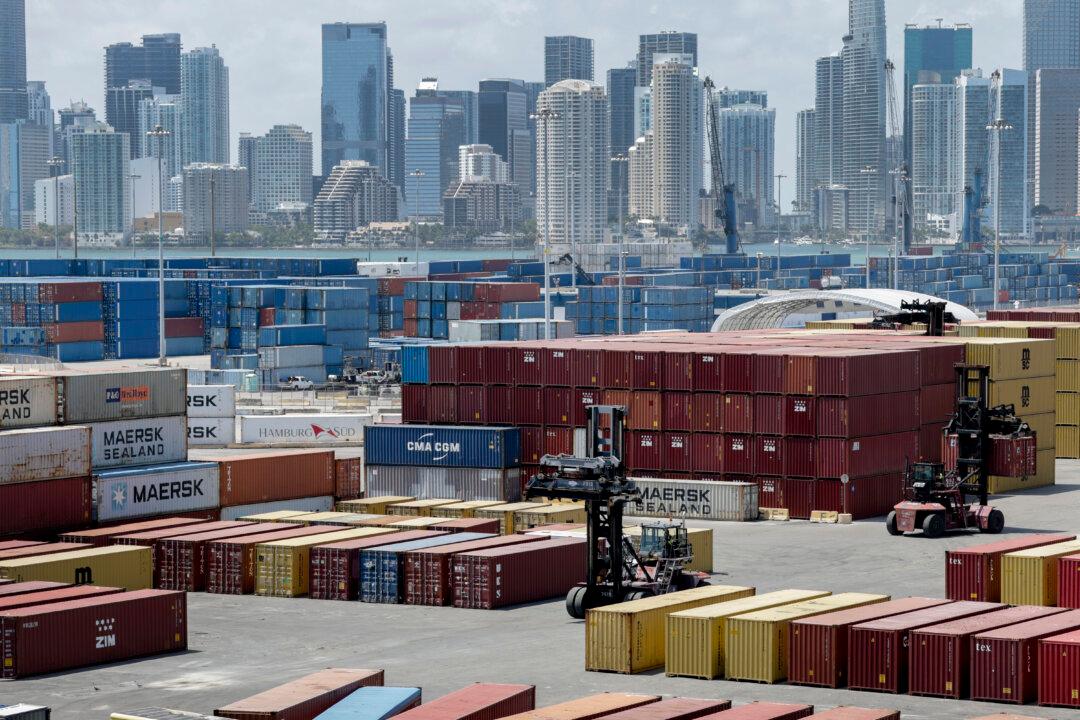President-elect Donald Trump during Tuesday’s election flipped a Texas border county that has not been won by a Republican candidate since the late 19th century.
With 99 percent of Texas’ votes counted, a projection from The Associated Press shows that Starr County went in favor of Trump by more than 57 percent, ending a more than 120-year streak.
Starr County, which has a population of around 66,000 people, went to Democratic candidates in recent elections. Hillary Clinton won 79 percent of the county’s vote against Trump in 2016, while President Joe Biden obtained 52 percent to Trump’s 47 percent in 2020.
Aside from Starr County, most other Texas counties located along the U.S.–Mexico border went in favor of Trump. That includes Hildago County, a key illegal border crossing area, as well as Cameron County, which encompasses the city of Brownsville, according to AP projections.
Voting data show that only the Texas border counties of El Paso and Presidio went in favor of Vice President Kamala Harris over Trump during Tuesday’s election.
In all, Trump won the entire state of Texas and its 40 electoral votes by an approximately 14-point margin over Harris, according to the data. He also won the state in the 2016 and 2020 elections.
Aside from Trump’s win, Sen. Ted Cruz (R-Texas) defeated Democratic challenger Collin Allred by more than 9 percentage points, the data show.
During a victory speech Wednesday morning, Trump did not mention Starr County but made note of a “historic realignment” of voters.
“They came from all quarters: union, nonunion, African-American, Hispanic-American, Asian-American, Arab-American, Muslim-American—we had everybody, and it was beautiful,” he told the crowd in Florida.
He added that his campaign had been “uniting citizens of all backgrounds around a common core of common sense.”
“We have the greatest people also. Maybe that’s the most important thing,” the president-elect said. “This campaign has been so historic in so many ways. We’ve built the biggest, the broadest, the most unified coalition. They’ve never seen anything like it in all of American history.”
Immigration was a major issue that propelled Trump to win his first presidential term during the 2016 election, namely by proposing the construction of a border wall along the U.S.–Mexico border. This time around, Trump also has vowed to curb illegal immigration and to bolster security along the U.S.–Mexico border, including using the National Guard and federal law enforcement officials.
During this campaign season, both he and Vice President-elect JD Vance have proposed a significant mass deportation plan that would first target criminal illegal immigrants, and both have said that illegal immigration is out of control and unsustainable.
Trump has stated that he would invoke the Alien Enemies Act, a 1798 law that allows the president to deport any noncitizen from a country that the United States is at war with. And he has vowed to kick out hundreds of thousands of illegal immigrants who have entered the country under several Biden administration programs.
Other plans include bringing back policies he put in place during his first term, such as the Remain in Mexico program and Title 42. Remain in Mexico made illegal immigrants wait in Mexico while their asylum cases were heard, while Title 42 curbed immigration on public health grounds.
The former president has also said he would seek to end birthright citizenship for people born in the United States whose parents are both in the country illegally, which may require a constitutional amendment to be passed.







